1509 Esclangona, provisional designation 1938 YG, is a rare-type Hungaria asteroid and binary system from the inner regions of the asteroid belt, approximately 8 kilometers in diameter. It is named after French astronomer Ernest Esclangon.
855 Newcombia is a stony background asteroid from the inner regions of the asteroid belt. It was discovered on 3 April 1916, by astronomer Sergey Belyavsky at the Simeiz Observatory on the Crimean peninsula. The S-type asteroid has a notably short rotation period of 3.0 hours and measures approximately 12 kilometers in diameter. It was named after Canadian–American astronomer Simon Newcomb (1835–1909).
978 Aidamina, provisional designation 1922 LY, is a dark background asteroid from the outer region of the asteroid belt, approximately 79 kilometers in diameter. It was discovered by astronomer Sergey Belyavsky in 1922, and later named after Aida Minaevna, a friend of the discoverer's family.
Lagrangea, provisional designation 1923 OU, is a carbonaceous background asteroid from the outer region of the asteroid belt, approximately 30 kilometers in diameter. It was discovered on 12 September 1923, by Russian astronomer Sergey Belyavsky at the Simeiz Observatory on the Crimean peninsula. The asteroid was named after Italian mathematician and astronomer Joseph-Louis Lagrange.
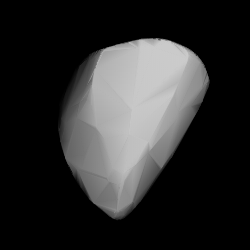
1022 Olympiada, provisional designation 1924 RT, is a background asteroid from the central regions of the asteroid belt, approximately 30 kilometers in diameter. It was discovered at the Simeiz Observatory on the Crimean peninsula on 23 June 1924, by Soviet astronomer Vladimir Albitsky, who named it after his mother, Olimpiada Albitskaya. The X-type asteroid has a short rotation period of 3.83 hours.
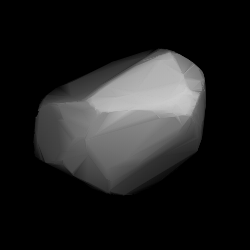
1088 Mitaka is a bright background asteroid from the inner regions of the asteroid belt. It was discovered on 17 November 1927, by Japanese astronomer Okuro Oikawa at the old Tokyo Astronomical Observatory in Japan. The stony S-type asteroid has a notably short rotation period of 3.0 hours and measures approximately 15 kilometers in diameter. It was named after the Japanese village of Mitaka.

1245 Calvinia is a stony Koronian asteroid from the outer regions of the asteroid belt, approximately 30 kilometers in diameter. It was discovered on 26 May 1932, by South African astronomer Cyril Jackson at the Union Observatory in Johannesburg. The S-type asteroid is likely elongated and has a rotation period of 4.9 hours. It was named for the city of Calvinia in South Africa.

1294 Antwerpia (prov. designation: 1933 UB1) is a dark background asteroid from the central regions of the asteroid belt. It was discovered on 24 October 1933, by astronomer Eugène Delporte at the Royal Observatory of Belgium in Uccle. The carbonaceous C-type asteroid has a rotation period of 6.6 hours and measures approximately 35 kilometers (22 miles) in diameter. It was named for the Belgian city of Antwerp.

1551 Argelander, provisional designation 1938 DC1, is a background asteroid from the inner regions of the asteroid belt, approximately 10 kilometers (6.2 miles) in diameter. It was discovered on 24 February 1938, by Finnish astronomer Yrjö Väisälä at the Turku Observatory in southwest Finland. The likely S-type asteroid has a rotation period of 4.1 hours. It was named after German astronomer Friedrich Argelander.
5171 Augustesen, provisional designation 1987 SQ3, is a background asteroid and slow rotator from the inner regions of the asteroid belt, approximately 8 kilometers (5 miles) in diameter. It was discovered on 25 September 1987, by Danish astronomer Poul Jensen at the Brorfelde Observatory in Denmark. The suspected tumbler and presumed Vestian asteroid has an exceptionally slow rotation period of 480 hours and possibly an elongated shape. It was named after Danish astronomer Karl Augustesen.
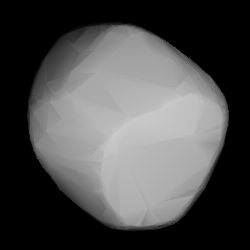
1244 Deira is a dark background asteroid and slow rotator from the inner region of the asteroid belt. The X-type asteroid has an exceptionally long rotation period of 210.6 hours and measures approximately 31 kilometers in diameter. It was discovered on 25 May 1932, by English-born South African astronomer Cyril Jackson at the Union Observatory in Johannesburg, who named it after Deira, an old kingdom near his birthplace, the market town of Ossett, located in West Yorkshire, England.
4282 Endate, provisional designation 1987 UQ1, is an asteroid from the inner regions of the asteroid belt, approximately 10 kilometers in diameter. It was discovered on 28 October 1987, by Japanese astronomers Seiji Ueda and Hiroshi Kaneda at Kushiro Observatory (399) in Japan. It was named for amateur astronomer Kin Endate.

1987 Kaplan, provisional designation 1952 RH, is a stony Phocaea asteroid from the inner regions of the asteroid belt, approximately 14 kilometers in diameter. It was discovered on 11 September 1952, by Soviet astronomer Pelageya Shajn at the Simeiz Observatory on the Crimean peninsula. The asteroid was named after Soviet astrophysicist Samuil Kaplan.

1175 Margo, provisional designation 1930 UD, is a stony background asteroid from the outermost regions of the asteroid belt, approximately 24 kilometers in diameter. It was discovered on 17 October 1930, by astronomer Karl Reinmuth at the Heidelberg-Königstuhl State Observatory in southwest Germany. The meaning of the asteroids's name is unknown.
1298 Nocturna, provisional designation 1934 AE, is a dark asteroid from the outer regions of the asteroid belt, approximately 40 kilometers in diameter. It was discovered on 7 January 1934, by German astronomer Karl Reinmuth at the Heidelberg Observatory in southwest Germany. The asteroid's name is the Feminine adjective of nocturnus, "nightly".
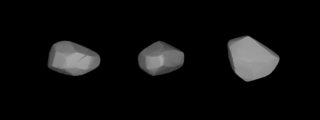
1263 Varsavia, provisional designation 1933 FF, is an asteroid from the central region of the asteroid belt, approximately 40 kilometers in diameter. It was discovered on 23 March 1933, by Belgian astronomer Sylvain Arend at Uccle Observatory in Belgium. It is named for the city of Warsaw.
2862 Vavilov, provisional designation 1977 JP, is a stony background asteroid and exceptionally slow rotator from the inner regions of the asteroid belt, approximately 7 kilometers in diameter. It was discovered on 15 May 1977, by Soviet astronomer Nikolai Chernykh at the Crimean Astrophysical Observatory in Nauchnij, on the Crimean peninsula. The asteroid was named after Russian plant geneticist Nikolai Vavilov and his physicist brother Sergey Ivanovich Vavilov.
1257 Móra, provisional designation 1932 PE, is an asteroid from the inner regions of the asteroid belt, approximately 15 kilometers in diameter. It was discovered on 8 August 1932, by German astronomer Karl Reinmuth at Heidelberg Observatory in southwest Germany. The asteroid was named after Hungarian astronomer Károly Móra.
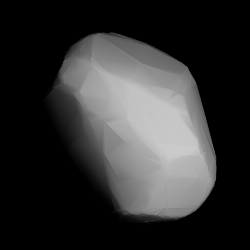
1534 Näsi, provisional designation 1939 BK, is a carbonaceous asteroid from the middle region of the asteroid belt, approximately 20 kilometers in diameter.
1535 Päijänne, provisional designation 1939 RC, is an asteroid from the outer region of the asteroid belt, approximately 25 kilometers in diameter. It was discovered on 9 September 1939, by Finnish astronomer Yrjö Väisälä at the Turku Observatory in Southwest Finland. It was later named for Lake Päijänne.










